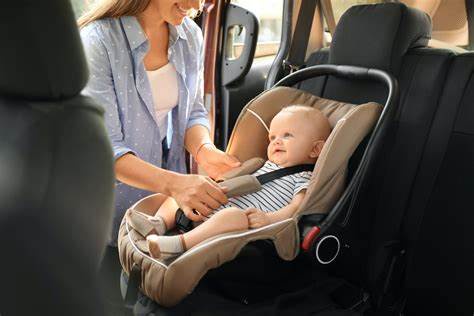Car safety for infants and toddlers is of paramount importance for parents. One crucial aspect is knowing when can babies face forward in car seat. This decision significantly impacts the safety and well-being of the child during car rides.
Safety Guidelines for Car Seat Usage
Importance of Rear-Facing Seats for Infants
Rear-facing car seats provide optimal protection for infants in the event of a crash. They distribute crash forces evenly across the child's body, reducing the risk of injury to the head, neck, and spine.
American Academy of Pediatrics (AAP) Recommendations
The AAP recommends keeping infants in rear-facing car seats until they reach the maximum height or weight limit specified by the seat's manufacturer, typically around two years old.
Signs Indicating Readiness for Forward-Facing Seats
Physical Development Milestones
Parents should assess their child's physical development, including head and neck control, before considering a transition to forward-facing seats.
Weight and Height Requirements
Ensure that your child meets the minimum weight and height requirements specified by the car seat manufacturer for forward-facing installation.
Benefits of Rear-Facing Seats for as Long as Possible
Spinal Cord and Neck Protection
Rear-facing seats cradle the child's head, neck, and spine, reducing the risk of spinal cord injuries in the event of a crash.
Minimizing the Risk of Injury in Accidents
Studies show that children are significantly safer in rear-facing seats during frontal and side-impact collisions.
Transitioning to Forward-Facing Seats
Knowing When it's Safe to Make the Switch
Avoid rushing the transition. Wait until your child outgrows the rear-facing seat's height or weight limit before transitioning to forward-facing.
Adjusting Harness Straps and Positioning
Ensure that the harness straps are at or above your child's shoulders and that the seat is reclined at the appropriate angle for forward-facing installation.
Common Misconceptions About Forward-Facing Seats
Myth Debunking: Bigger is Not Always Safer
Contrary to popular belief, age is not the sole determinant for transitioning to forward-facing seats. Size and developmental readiness play a crucial role.
Understanding the Role of Age vs. Size
While age can serve as a general guideline, it's essential to prioritize size and developmental milestones when considering a transition.
Factors to Consider Before Transitioning
Consulting Pediatricians and Car Seat Technicians
Seek guidance from healthcare professionals and certified best rotating car seat technicians to ensure a safe and timely transition.
Evaluating Individual Developmental Milestones
Every child develops at their own pace. Consider your child's unique developmental milestones before making any decisions.
Tips for a Smooth Transition
Gradual Adjustment to the New Position
Introduce forward-facing car rides gradually to allow your child to adapt comfortably to the new seating arrangement.
Monitoring Child's Comfort and Behavior
Pay attention to your child's comfort level and behavior during car rides. Address any signs of discomfort or anxiety promptly.
Importance of Proper Installation and Usage
Checking for Secure Installation
Regularly inspect the car seat for proper installation and ensure that it remains securely fastened at all times.
Regularly Inspecting for Wear and Tear
Inspect the car seat regularly for signs of wear and tear, and replace any damaged components promptly to maintain optimal safety.
Frequently Asked Questions (FAQs)
- What is the recommended age for forward-facing seats?
- The recommended age varies depending on the child's size and developmental readiness. However, most experts suggest transitioning after the age of two.
- How do I know if my child is ready to face forward?
- Look for signs of physical readiness, such as adequate head and neck control, and ensure that your child meets the weight and height requirements specified by the car seat manufacturer.
- Can I use convertible car seats for both rear-facing and forward-facing positions?
- Yes, convertible car seats are designed to accommodate both rear-facing and forward-facing installations, providing versatility as your child grows.
- Are there any specific regulations regarding car seat usage?
- Car seat regulations vary by state and country. It's essential to familiarize yourself with local laws and guidelines to ensure compliance.
- What are the potential risks of transitioning too early?
- Transitioning to forward-facing seats prematurely can increase the risk of injury in the event of a crash, as the child's neck and spine may not be adequately supported.
Conclusion
Understanding the right time for babies to face forward in car seats is crucial for ensuring their safety during car rides. By following safety guidelines, monitoring developmental milestones, and seeking professional advice when needed, parents can make informed decisions that prioritize their child's well-being.


No comments yet